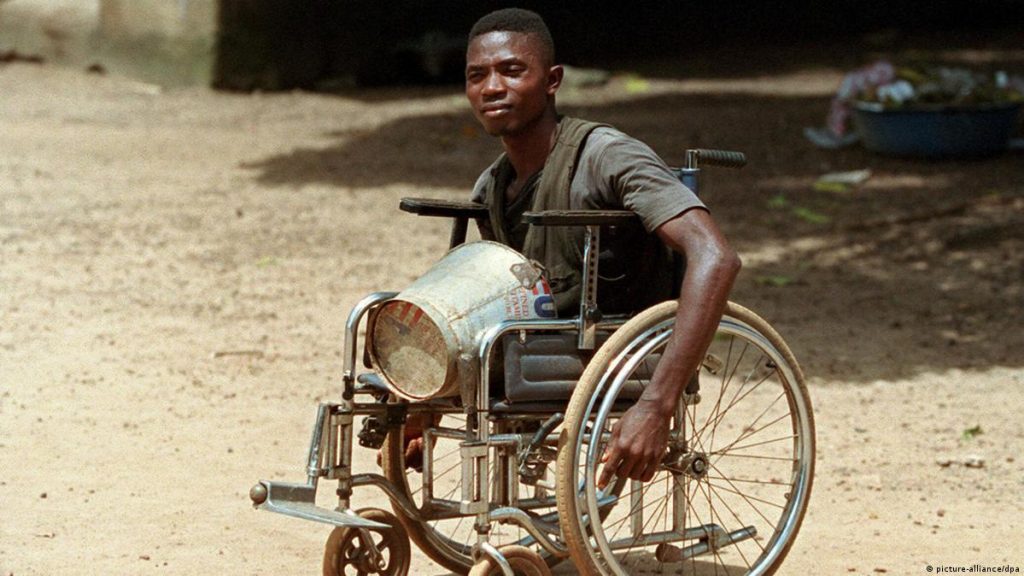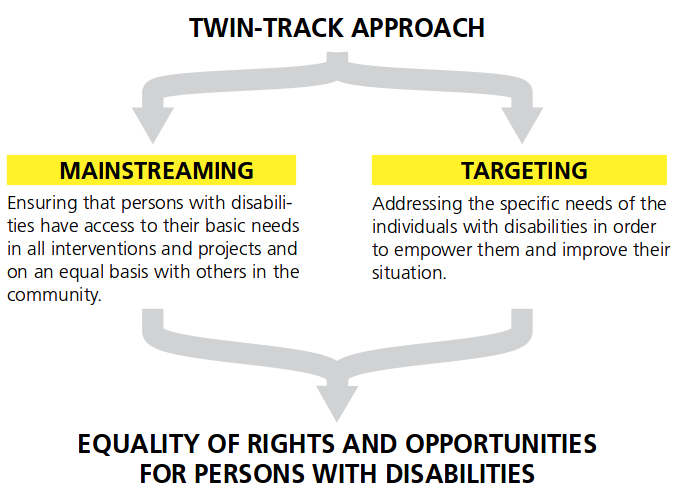Disability Inclusion in Humanitarian Action: The Twin-Track Approach

Having worked in volatile contexts where the needs of survivors of active conflicts/civil war, and natural disasters are severe, I can say that Humanitarian assistance is both life-saving and life-giving. As everyone admits, the administration of aid should be without an adverse distinction.
In an earlier article, I analyzed the situation of People on the Move; focusing on the flight of persons with disabilities and their families to safety during emergencies. A specific point I would connect with this subject is- the Intersectional discrimination of persons with disabilities. Often, Humanitarian organizations and their staff hide under the claims of ‘insufficient budget’, ‘technical capacity’ and ‘invisibility of persons with disabilities’ to escape providing reasonable accomodation for persons with disabilities.
Even though the campaign to #LeaveNoOneBehind have been longstanding, outcomes of field research still reveal the difficulties persons with disabilities face with accessing humanitarian assistance and protection.
There is no single answer to the reasons why such systematic exclusion persists in the field, however, the values and thematic priorities of organizations and their technical leadership can hugely lead to progressive outcomes.
What is Twin-Track Approach?
It is an Approach that ensures that a project is well defined and inclusive of the needs of persons with disabilities. It is a two-step integrated approach that establish disability inclusion; as Mainstream and a Targeted response.

An illustrative Example of a WASH Project (borehole for drinking water) in a refugee camp: Applying universal design principles to design the borehole and positioning it within a central location so that people of different heights, physique and age can independently fetch drinking water is ‘Mainstreaming’, while taking additional steps to prepare information about the project in accessible formats for specific persons who are blind or hard of hearing or providing additional assistive devices for some persons to access the drinking water can be referred to as ‘Targeting’.
Twin-Track approach should be weaved into project design and implementation. All inputs identified for the provision of reasonable accommodation of persons with disabilities must be well budgeted.
Twin-Track Approach advances the concept of Social Inclusion, and promote the dignity and human rights of persons with disabilities in humanitarian emergencies, ensuring that their specific needs are identified, budgeted for and provided.
What measures do you take to identify and adequately include the needs persons with disabilities in your projects?
I hope this blog post inspire you to do more…
Deborah Brown Majekodunmi
